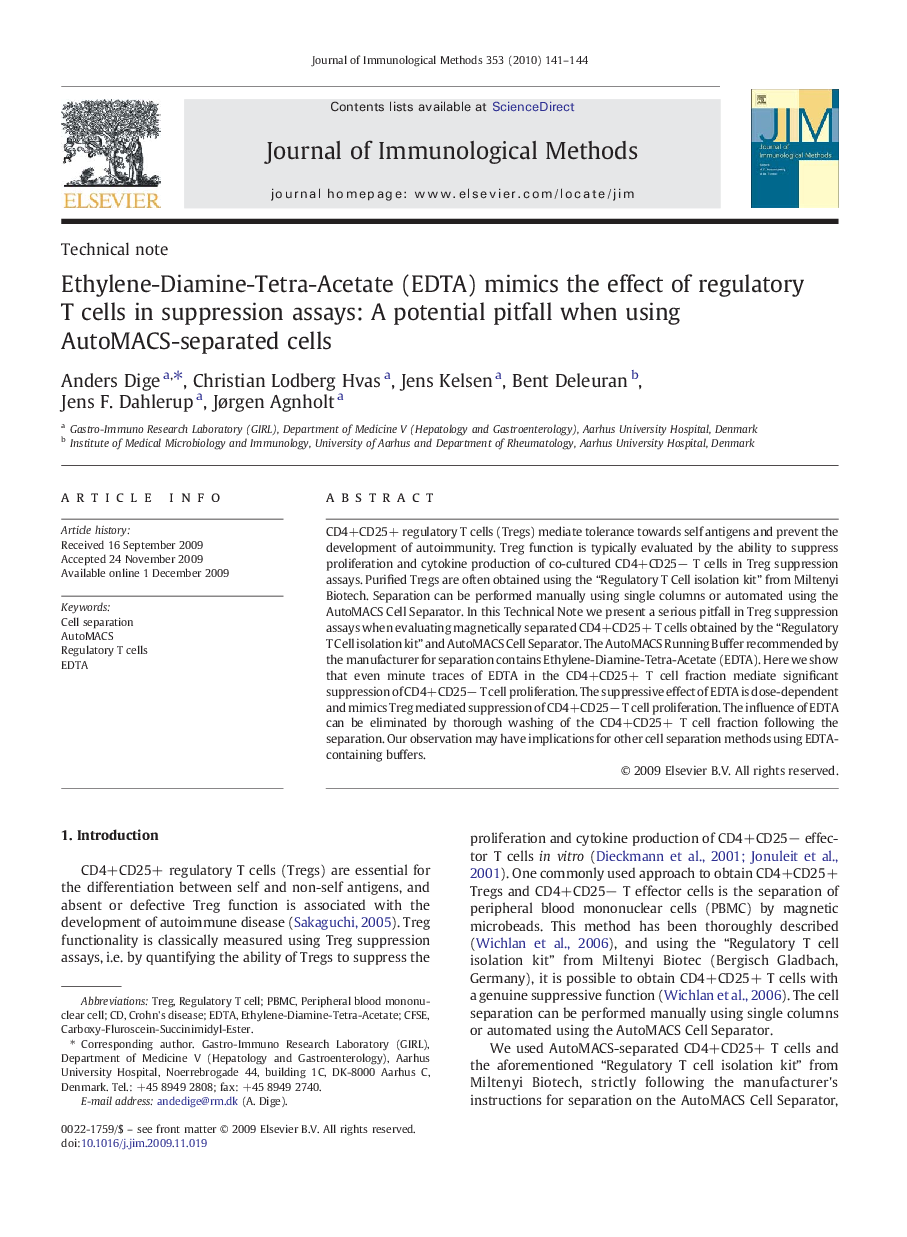| کد مقاله | کد نشریه | سال انتشار | مقاله انگلیسی | نسخه تمام متن |
|---|---|---|---|---|
| 2088632 | 1545753 | 2010 | 4 صفحه PDF | دانلود رایگان |

CD4+CD25+ regulatory T cells (Tregs) mediate tolerance towards self antigens and prevent the development of autoimmunity. Treg function is typically evaluated by the ability to suppress proliferation and cytokine production of co-cultured CD4+CD25− T cells in Treg suppression assays. Purified Tregs are often obtained using the “Regulatory T Cell isolation kit” from Miltenyi Biotech. Separation can be performed manually using single columns or automated using the AutoMACS Cell Separator. In this Technical Note we present a serious pitfall in Treg suppression assays when evaluating magnetically separated CD4+CD25+ T cells obtained by the “Regulatory T Cell isolation kit” and AutoMACS Cell Separator. The AutoMACS Running Buffer recommended by the manufacturer for separation contains Ethylene-Diamine-Tetra-Acetate (EDTA). Here we show that even minute traces of EDTA in the CD4+CD25+ T cell fraction mediate significant suppression of CD4+CD25− T cell proliferation. The suppressive effect of EDTA is dose-dependent and mimics Treg mediated suppression of CD4+CD25− T cell proliferation. The influence of EDTA can be eliminated by thorough washing of the CD4+CD25+ T cell fraction following the separation. Our observation may have implications for other cell separation methods using EDTA-containing buffers.
Journal: Journal of Immunological Methods - Volume 353, Issues 1–2, 28 February 2010, Pages 141–144